1873 - Old Forge Coal Mines
1873 - Old Forge Coal Mines
1873 - Old Forge Coal Mines
You also want an ePaper? Increase the reach of your titles
YUMPU automatically turns print PDFs into web optimized ePapers that Google loves.
INSPECTORS OF MINES. . 67<br />
it melts at 230° to a yellow liquid, and at 450° changes to molasses color<br />
substance, which, if quenched in cold water, becomes elastic like india rubber,<br />
but from this allotropic condition it gradually returns to its original<br />
state.— Youmans.<br />
The subject upon those gases common to coal mines has been extracted<br />
from the works of modern authors, who have labored long and diligently<br />
for the enlightenment of humanity and to ameliorate their condition. The<br />
miner, for whose principal benefit we have penned the foregoing subject, may<br />
become more acquainted with his principal enemy in the mine should he<br />
study this subject carefully, and consult his own and his co-laborers' interest.<br />
In connection with this information we will also explain the uses of<br />
the different instruments which science has brought to aid him in his dangerous<br />
calling. The miners, in modern times, are next i» importance to<br />
the army of a nation, and to discipline and diffuse knowledge amongst them<br />
would be an act of pure philanthrophy.<br />
The American miners of this day are, as a body, very far in advance of<br />
the miners of any other country. The wholesome constitutional liberty<br />
granted to the people, and the superior system of our common schools elevates<br />
them above any others in the same calling. But, comparatively speaking,<br />
our mining is but in its infancy, comparably so. Then to become acquainted<br />
with the uses of mine instruments for detecting gases, and knowing<br />
the constituent elements of which these different gases are composed,<br />
would enable the miner, in nineteen cases out of twenty, to protect himself<br />
from falling a victim to these dangers that momentarily seek their victim.<br />
Instruments used in <strong>Mines</strong>.—Amongst which are : 1st. The safety-lamp,<br />
of which there are many patterns. 2d. The anemometer or air meter, the<br />
casella and biriam. 3d. The thermometer, for measuring tne temperatures.<br />
4th. The barometer, for ascertaining the weight of the air. 5th. The hygrometer,<br />
for ascertaining the quantum of vapor. 6th. The clinometer,<br />
for measuring the dip of the seams.<br />
With a proper knowledge of the real uses of these different instruments<br />
the person using them ought to know the fundamental principles of arithmetic<br />
to enable him to make the different calculations correctly, and be<br />
guided in conformity with the laws under which they are governed ;<br />
and,<br />
indeed, our experience with these tests clearly demonstrates the truths<br />
which these scientific guides have so clearly established, that we beg the<br />
liberty of recommending their use in all the large collieries as a measure<br />
of safety.<br />
Safety Lamps.—Sir Humphrey Davy, in his scientific researches, happily<br />
discovered and invented his safety lamp. Davy discovered that flame<br />
would not readily pass through a closely woven wire gauze, and constructed<br />
a tube-like covering—the result of several experiments. This covering is<br />
placed over the light, securely fastened to an oil stock, through which a wire<br />
picker passes tc the wick. Its office is to force up or draw down the wick<br />
as required, or to extinguish the flame all together if found necessary.<br />
The gauze arrests the passage of the flame and prevents its communication<br />
with the surrounding gas, as the air which enters the lamp to support its<br />
light expands in the lamp, and must force its way through the upper part<br />
of this covering. This creates a draught within the gauze. Should the<br />
air be charged with fire-damp it readily takes fire in the lamp, and is prevented<br />
from exploding by coming in contact with the metal gauze, and for<br />
a time is arrested, when the wick is carefully withdrawn and the lamp permitted<br />
to cool. But should the flame be permitted to continue to burn for<br />
a longtr period, the heated gauze would yield to the force of the expand-



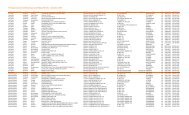
![1945 Anthracite Annual Report Districts 19 - 25 [Adobe pdf - 9148Kb]](https://img.yumpu.com/50308099/1/190x119/1945-anthracite-annual-report-districts-19-25-adobe-pdf-9148kb.jpg?quality=85)
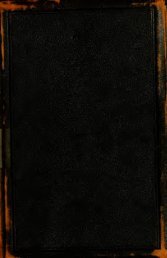

![1937 Anthracite Annual Report Districts 1 - 11 [Adobe pdf - 9394Kb]](https://img.yumpu.com/43539962/1/190x119/1937-anthracite-annual-report-districts-1-11-adobe-pdf-9394kb.jpg?quality=85)

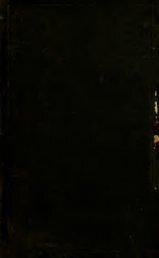
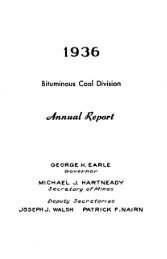

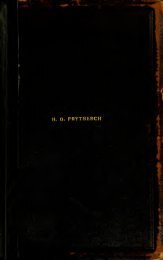
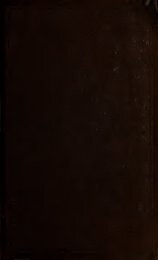
![1931 Anthracite Annual Report Districts 1 - 11 [Adobe pdf - 8007Kb]](https://img.yumpu.com/39427789/1/190x119/1931-anthracite-annual-report-districts-1-11-adobe-pdf-8007kb.jpg?quality=85)

